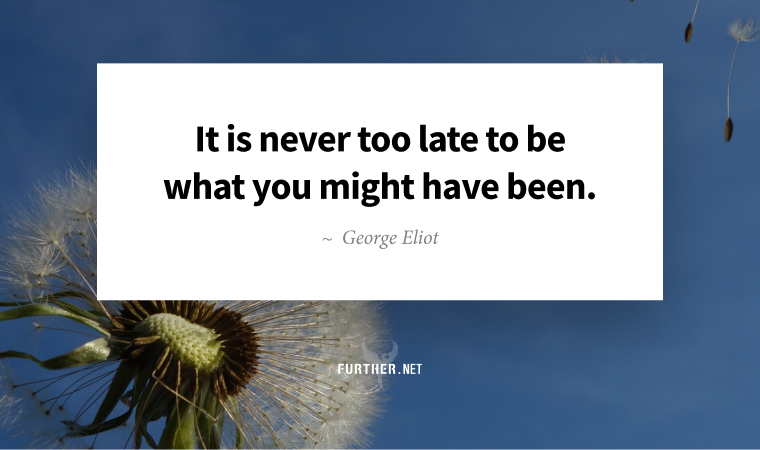
There’s a Navy slogan from the 80s you may remember: “It’s not just a job, it’s an adventure.”
Framing work as personally expansive was a genius marketing move. Decades later, when viewing your vocation through the double lens of midlife and pandemic-induced uncertainty, you may feel ready for a new adventure.
Here at Further, we support finding joy in your work, and we also recommend pragmatic pivots. Consider all angles, as you may need to re-skill and make sacrifices.
Smart strategies and mental models can anchor you as you plan the next phase of your professional life.
Considering a Career Change
When facing a significant transition, start by using your noggin.
When you do the work upfront by examining your situation through the lens of a few mental models, you set yourself up for fewer regrets and more satisfaction down the road.
First off, it’s velocity, not speed, that propels you forward. Taking a high-paying job or signing a client in a business sector you know but don’t care about may expedite ego-driven goals — but it won’t take you where you ultimately want to go. Velocity helps you turn down short-term gains to play a better long-game.
If you’re not sure about your ultimate destination, work backward using inversion. Identify what you do and don’t want — then make your plans in reverse order, according to the success and satisfaction factors the exercise reveals. For example, you might realize you love working from home or hate doing work unaligned with your values.
Requirements in hand, you can confidently move forward.
Shore Up Your Strategies
There’s an old expression (and mental model): “The map isn’t the territory.”
Maps are an abstraction, which is why career coaches encourage staying grounded in reality while exploring the uncertain terrain of a new direction. For example, strategizing how to survive lean months is as important as plotting the outcome you desire.
It’s also crucial to shift to a skills-first mentality. Focusing on what you do well makes it easier to transition to doing what you love.
I know this firsthand: a deepening interest in meditation led me to teacher training. Now that I’ve finished, my career pivot is underway — but I’m using my skills as a solopreneur and freelance marketing writer as a backbone.
Finally, be ruthless about what you leave behind, but kind to yourself by starting small. By ditching what no longer serves you, you’ll find time in your day to make “no regret” moves, like updating your LinkedIn.
A midlife career change may feel risky, but so is wasting time waiting for your ship to come in. Instead, embrace the joy of jumping ship and get on with the life you’re meant to live.
Mental Models for Career Changes (Farnam Street)
5 Strategies for Reinventing Your Career in Uncertain Times (Harvard Business Review)
